Women Church Outfit Ideas for a Date with Their Christian Men
There’s something so deeply personal and sacred about getting ready for church. It’s not just about throwing on a dress—it’s about preparing your heart, body, and mind for worship. And if you’re going to church alongside your Christian man, it becomes even more meaningful. You want to reflect not just beauty but also the shared devotion and respect the two of you carry into that spiritual space. I’ve always thought about this as clothing your soul first, then your body.
I like to start this journey into styling with some words from 1 Samuel 16:7: “Man looks at the outward appearance, but the Lord looks at the heart.” While this reminds me not to obsess over appearances, I also see it as an invitation to balance physical modesty with spiritual radiance. Dressing intentionally demonstrates respect—for myself, for my partner, and for the sacred community I’m walking into.
When I think about what “goes along with a Christian man,” I picture not just complementing him visually, but aligning with the kind of reverence and dignity we both hold dear. A soft, flowing midi dress might feel perfect—something with a floral pattern or a delicate solid color. It makes me feel connected to creation itself, almost like I’m carrying springtime in every step. I think God has a soft spot for beauty; after all, He made a universe overflowing with it.
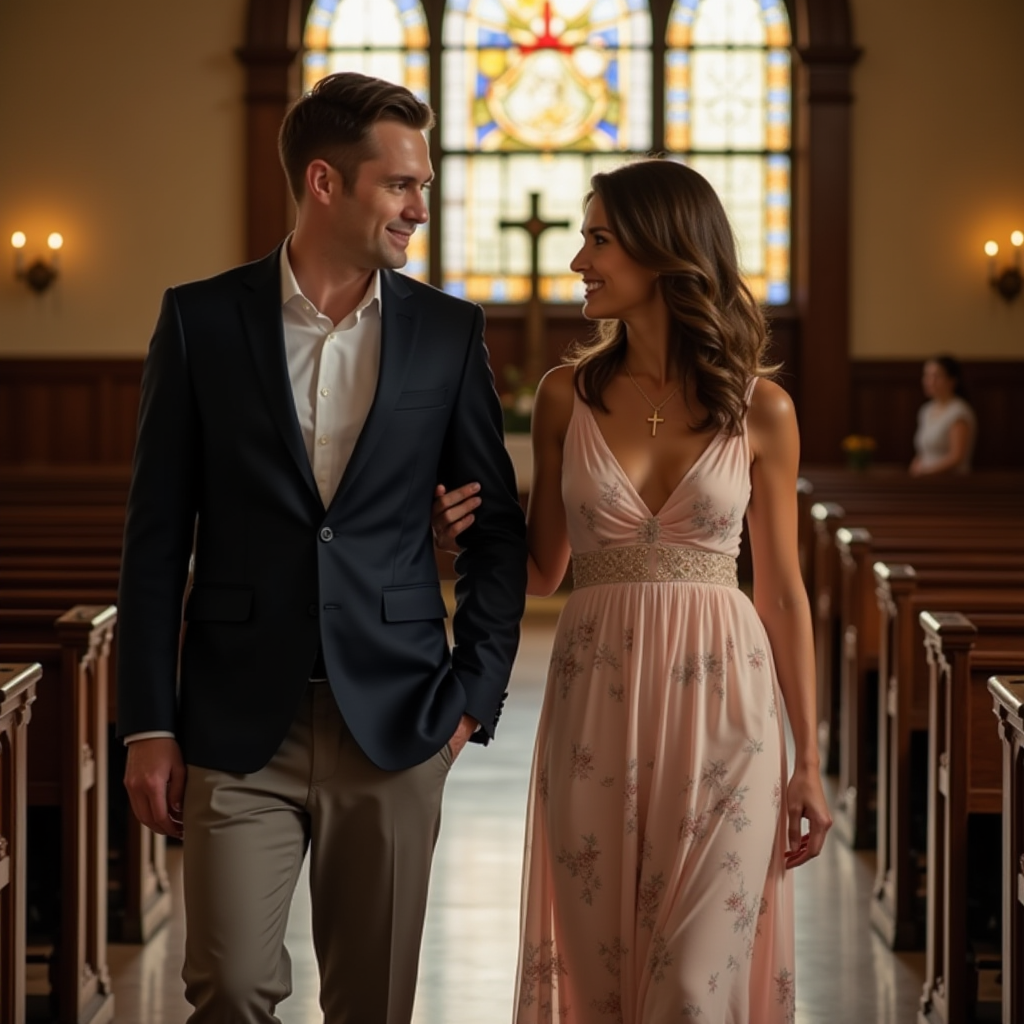
But here’s the key: balance. If he’s in a well-tailored blazer and dress pants, then perhaps I’d choose something structured, like a dress with a defined waist, a pencil skirt, or even a tailored jumpsuit (yes, those can absolutely be church-appropriate). On the other hand, if we’re attending a more casual service, I might go for a maxi skirt and a cozy cardigan, paired with ankle boots that say “chic but grounded.”
The wonderful thing about incorporating faith into fashion is that modesty doesn’t mean mediocrity. In fact, I see it as a reflection of self-respect. Audrey Hepburn probably said it best: “Elegance is the only beauty that never fades.” Wouldn’t you agree that modesty is elegance’s most faithful companion?
Modesty, Beauty, and the Spirit Behind the Wardrobe
When I think about why church attire even matters, my thoughts often wander to Proverbs 31, the famous chapter on the “virtuous woman.” One of its lines says, “She is clothed with strength and dignity; she can laugh at the days to come” (Proverbs 31:25). That line always sticks with me, not because it references actual clothing, but because it brings forward the idea that what we wear is an extension of what’s in our hearts. Strength. Dignity. Grace. These are the invisible layers we should always seek to wear before pulling on a garment.
I’ve always loved the way church tradition has evolved when it comes to women’s fashion. Centuries ago, women often wore head coverings and long dresses to services, inspired by the apostle Paul’s letters. In 1 Corinthians 11, he talks about veils as a symbol of reverence—something that was about humility before God, rather than enforcing specific beauty standards. Of course, we don’t follow the same strict prescriptions now, but I think the spirit of this idea remains: dressing respectfully and thoughtfully is part of our worship, part of how we show up for God and the community He has placed us in.
One thing that fascinates me is how church fashion has always been a dialogue between individual spirituality and cultural expectations. Did you know that during the Victorian era, fashion for church was largely about showing one’s piety and restraint? High collars, long sleeves, and dark, somber colors dominated. These choices might seem suffocating now, but they symbolized something profound: a desire to reflect the sacredness of the space through one’s appearance. Today, we have fewer constraints when it comes to style, but that same principle—a drive to reflect faith through what we wear—is still alive.
I love weaving symbolic choices into my outfits when I can. For example, wearing white—a color of purity in Scripture—always feels like stepping into a sacred reflection of who we are called to be in Christ. And don’t forget the power of earthy tones, like muted greens and browns, as a nod to God’s creation. Even gold jewelry can carry a subtle theological touch, reminding me of Scripture’s vision of heaven’s streets “paved with gold” (Revelation 21:21). It’s amazing that something as small as an earring or bracelet can carry so much meaning.
That said, I would never want my “look” to pull too much attention away from God or the fellowship of worship itself. I have to remind myself, this isn’t a runway; this is a sanctuary. If every head turns to look at my outfit and not towards Him, then maybe I’ve missed the mark. There’s a poignant humility in this balance. John Milton captures it beautifully in Paradise Lost when he writes about Eve: “Grace was in all her steps, heaven in her eye.” The key, I think, is letting our inner grace speak louder than our external appearance—though the two can absolutely complement one another.
Read: What Does Boyfriend Fit Mean?
Church Attire: Aligning with Seasons and Symbolism
One thing I love about dressing for church is how it shifts with the seasons, both spiritually and practically. Just think about how the church calendar brings a rhythm into our faith: Advent, Easter, Pentecost—it’s all part of a natural cycle, and our clothing can reflect this beautiful ebb and flow. Dressing for church doesn’t just involve putting on something “nice”; it’s about meeting the moment. It’s about subtly mirroring the season we’re in, both in nature and in God’s story.
Take spring, for example, when Easter rolls around and the promise of resurrection fills the earth with blooming flowers and fresh greenery. I find myself gravitating toward soft pastels—blush pinks, creamy whites, or baby blues. There’s something symbolic about these colors—an echo of new life, renewal, and purity. Wearing a flowy, chiffon dress in these shades feels like a silent hallelujah to the heavens. Pair it with a pair of nude heels or wedges and a dainty cross necklace, and you’ve got a look that whispers “grace and joy.”
Then there’s summer, when everything is abundant and alive. I like to keep things light, airy, and comfortable during this time—think linen dresses or a summery floral print. Maybe add in a straw hat or wide-brimmed accessory for outdoor services or church picnics. On days like these, my outfit feels like an extension of Psalm 19:1: “The heavens declare the glory of God; the skies proclaim the work of His hands.” A simple outfit lets me breathe in the beauty of the season, while still honoring sacred modesty.
But when autumn arrives, my wardrobe becomes richer—both literally (darker tones and heavier fabrics!) and symbolically. This is a time for muted earthy tones: deep greens, burgundies, and browns. A pleated midi skirt paired with a soft knit sweater and ankle boots works perfectly. Don’t you love how simple textures—wool, suede, even corduroy—somehow feel more grounded, a bit closer to the earth itself? I like to think of these choices as a celebration of harvest season, a reflection of God’s provision.
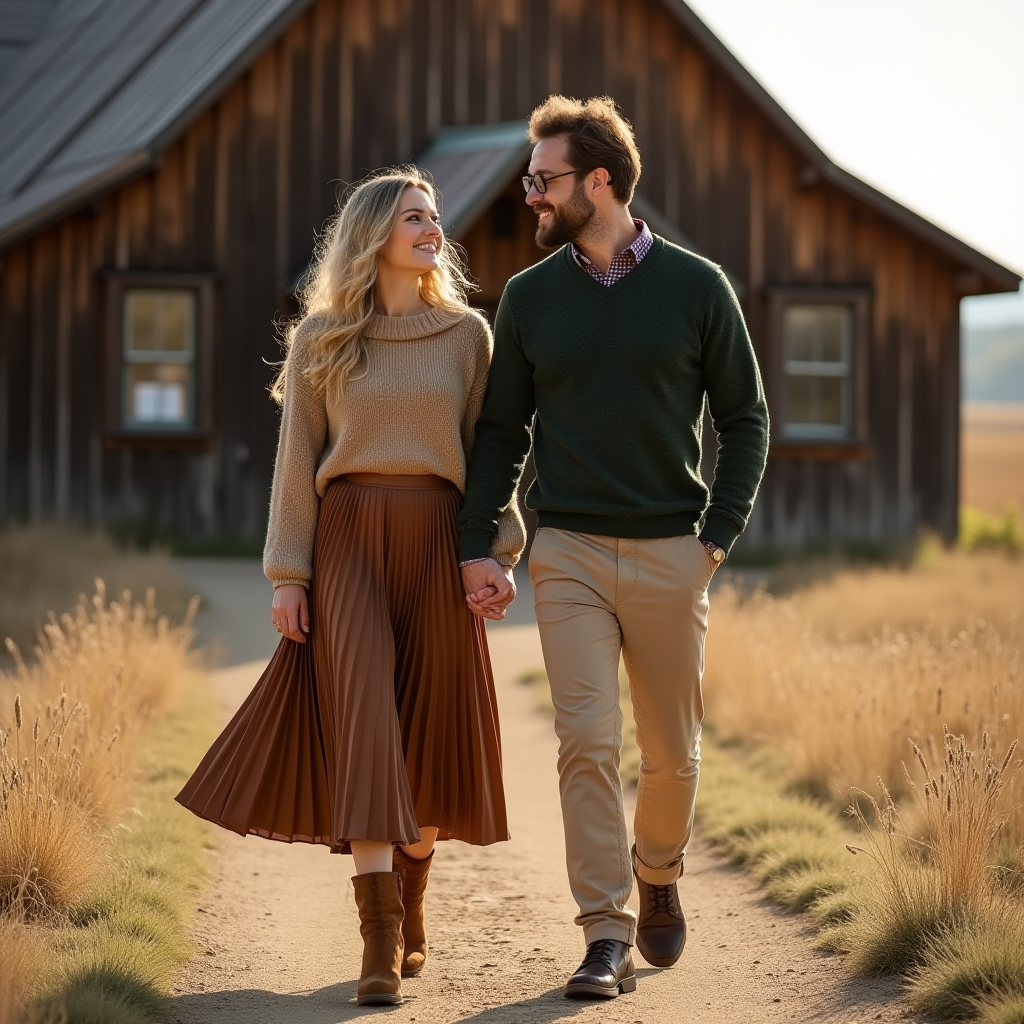
And of course, there’s winter, when Christmas services are the highlight. This is the time to embrace elegance—velvet blazers, jewel-toned dresses, or even a tailored pantsuit in a rich fabric. During these celebrations of Christ’s birth, it feels fitting to wear something that exudes honor and festivity without veering into extravagance. Red—a symbol of Christ’s sacrifice—always feels like an ideal, meaningful color for the season, but let’s not overlook classic black or emerald green for a timeless holiday look.
Beyond seasonal adaptations, there’s the added element of symbolism. I’ve always believed that what you wear can be as much of a prayer as the words you speak or sing. When dressing for church, I’m not just considering aesthetics; I’m thinking about what my choices say about my place in God’s plan. If I wear blue, for example, I often think of the Virgin Mary, whose faithfulness transformed the world. Or if I opt for green, I see it as embodying hope and eternal life. These subtle nods may go unnoticed by others, but they can serve as a daily act of intentionality—a small reminder that faith permeates every detail, down to the colors on my shoulders.
A Partnership in Style and Faith
There’s something special about going to church side by side with the man you’re walking through faith with. It’s not just about sharing the spiritual journey; it’s about being a visual representation of unity—a team, if you will, walking into God’s house together. I’ve always thought about the idea of aligning outfits like aligning hearts: subtle, understated, and purposeful, with a focus on complementing one another, not competing for attention.
I love when we both get ready for Sunday service and there’s this unspoken synchronicity in our choices. My partner usually leans toward a blazer and crisp dress pants or sometimes a casual button-up shirt when the vibe is a little more laid-back. If that’s the case, I’ll aim for something that complements the textures and tones of his outfit. For example, if he’s in navy, I might go for a dress with hints of the same hue—maybe a navy floral A-line dress or a cream-colored wrap dress with blue accents. It’s subtle, but it creates a sense of cohesion that feels deliberate without being showy.
Scripture often speaks about the idea of unity in relationships, and clothing can be an understated symbol of that shared purpose in Christ. There’s a line in Ecclesiastes 4:12 that says, “Though one may be overpowered, two can defend themselves. A cord of three strands is not quickly broken.” For me, dressing thoughtfully alongside my partner honors that idea—it’s like saying, We’re in this together, bound by something greater than ourselves. Your outward presentation as a couple can reflect the harmony you strive to live out in your relationship, with God as the third strand connecting you both.
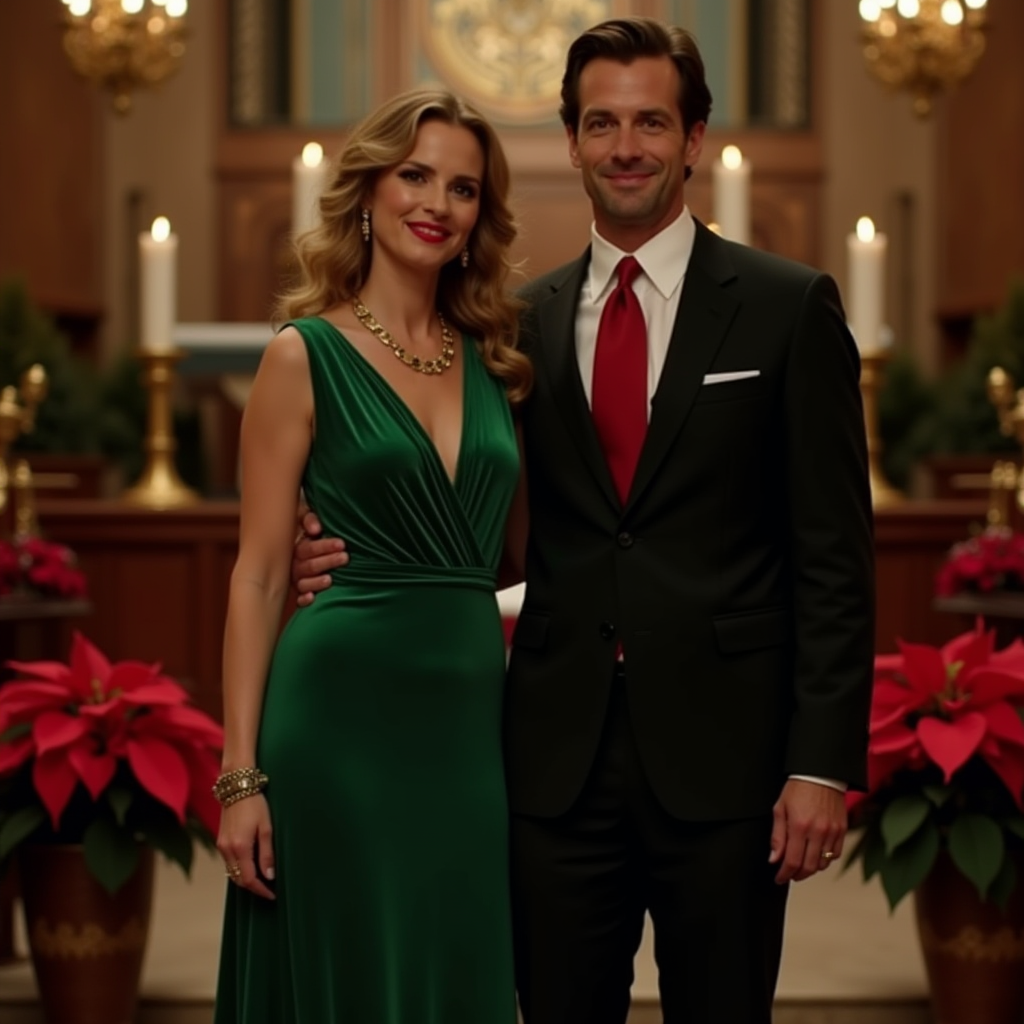
Now, I’m not saying you have to look like you’re matching for prom! (Though no judgment if you do—I’ve seen some adorable matching ensembles at weddings and Christmas services.) The key is creating harmony, not uniformity. For example, if he’s opting for something casual, like khakis and a neutral sweater, I might wear an equally laid-back but polished dress—something flowy with a cardigan or even a tailored jumpsuit in a complementary color. This keeps us on the same level of formality, which feels important; I wouldn’t want to show up in a dramatic cocktail dress if he’s rocking casual slacks.
I also think it’s important to consider vibes. If your man’s style leans toward classic and traditional, you might find yourself reaching for timeless wardrobe pieces—simple pearls with a sheath dress, or a tea-length skirt with a lace top. If he’s more contemporary, with sneakers and a streamlined blazer, it might inspire you to push toward something modern but still reverent, like a midi dress with statement earrings or block heels.
Speaking of dresses, can we talk about fit? One of the rules I try to live by is this: wear something modest but also confident. There’s no singular definition of modesty, but to me, this means respecting the sanctity of the space I’m about to walk into without erasing my own sense of beauty or identity. A fitted but not overly tight sheath dress, for example, speaks to presentation without overwhelming God’s purpose for my presence. If my man is walking solidly in his faith and leadership, I want my attire to reflect strength and poise as well—the kind of quiet dignity Proverbs 31 exudes.
Accessories, too, can be an opportunity to find alignment. Maybe he’s wearing a leather belt or shoes, and you choose a bag or shoes in a similar tone. I find little details like this fun to play with—small ways to say, we’re walking together as one. If it’s a more formal service, like a wedding or Easter Sunday, you could take it further with a matching pocket square for him in the same color or print as your dress.
Ultimately, the beauty of coordinating doesn’t lie in what anyone else sees—your pastor, congregation, family, or friends—but in that quiet act of mindfulness before you leave the house. It’s about pausing, looking at each other, and thinking, How can we reflect the beauty of this faith we’ve been given? How can we step out in alignment, both spiritually and outwardly? It’s an extension of your bond—a reflection of unity before God, who celebrates not the clothes we wear but the hearts beneath them.
Read: Can a Christian Girl Wear Short Dresses Like Bikinis?
Dressing as a Reflection of Unity and Faith
There’s a deeper level to dressing for church, especially when doing so alongside your Christian man. It’s not just about looking composed or put together—it’s about how the outward aligns with the inward. Clothing in many ways acts as a bridge between what’s visible to others and what resides within the heart. After all, what we wear reflects thoughtfulness, intentionality, and respect—for ourselves, for the spaces we inhabit, and for God.
I think of this idea often when looking at how God clothed Adam and Eve in Genesis 3:21: “The Lord God made garments of skin for Adam and his wife and clothed them.” This act, though occurring after their fall, stands as a quiet, subtle act of care. God Himself takes the time to physically clothe them, as though to both cover their shame and affirm their continued worth in His eyes. What a reminder that how we attire ourselves isn’t trivial—it can carry spiritual weight, a delicate mix of covering and honoring.
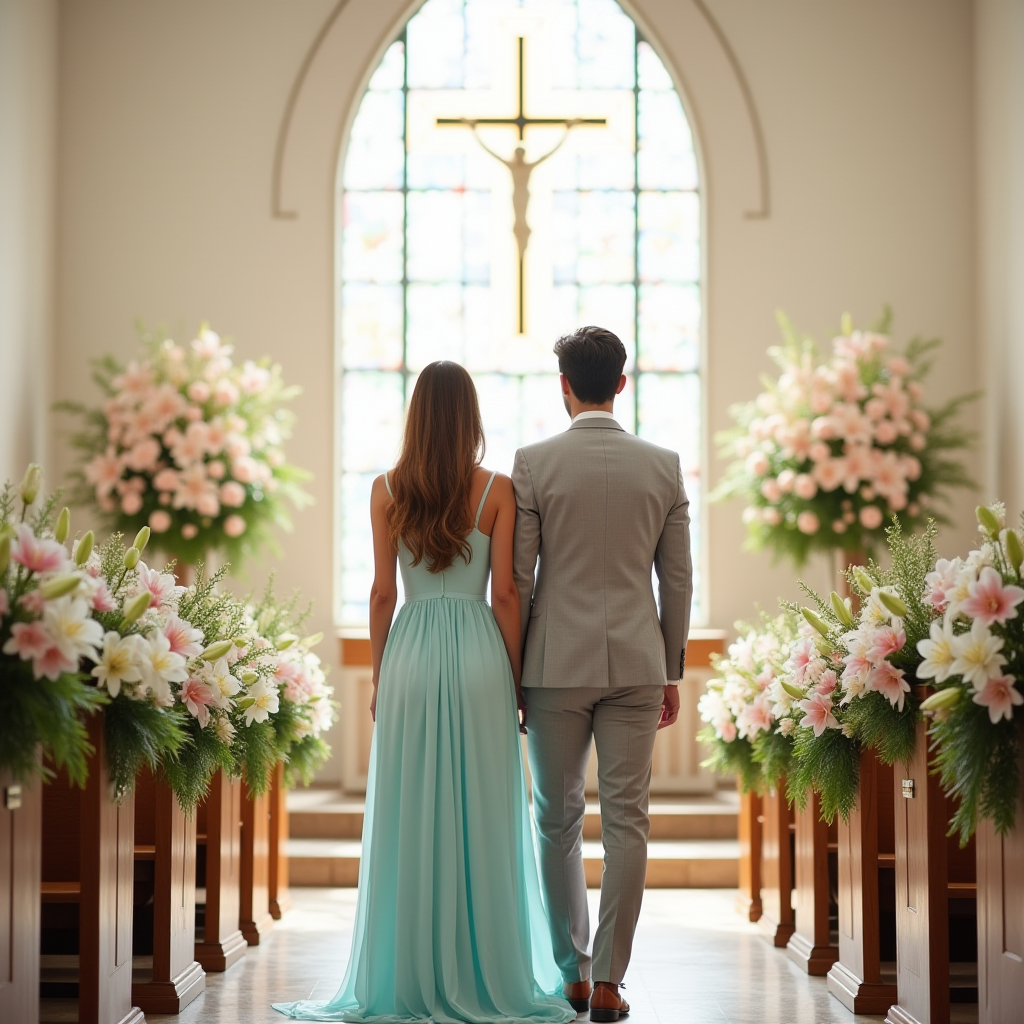
When walking side by side with your Christian partner, clothing might take on an even greater level of significance. Consider how relationships in faith resemble sacred partnerships, and how every step together testifies to a shared life of love, respect, and spiritual intention. Ephesians 5:22-33 speaks of marriage as mirroring the relationship between Christ and the Church. While this passage focuses on submission, service, love, and unity, it also carries an undertone of mutual presentation—living in harmony to reflect God’s kingdom. Dressing intentionally can be a small act of that larger testimony.
What we wear can even mirror some deep biblical truths about relationships. Think of this: clothing, when chosen mindfully, communicates care. Taking the time to coordinate, plan, or even subtly complement your partner’s look is a way of saying, I see you. I walk with you. Together, we stand before God. That’s beautiful to me—a quiet yet deliberate way to reflect unity. In my heart, I believe this is what Paul meant in Colossians 3:12-14 when he said, “Clothe yourselves with compassion, kindness, humility, gentleness and patience. And over all these virtues put on love, which binds them all together in perfect unity.”
This idea reminds me of Anne Bradstreet, one of the earliest poets of Puritan America, who used her writings to reflect both the sacred and the personal. In her poem To My Dear and Loving Husband, she wrote:
“If ever two were one, then surely we.”
Her words resonate deeply with me, especially when I think of walking arm-in-arm with my partner into church. If ever two were one, that unity would surely spill over into every detail—even into how we present ourselves before God and fellow believers. I think this allows us to make dressing not just an individual act of faith but a shared one, a way to highlight the “oneness” that’s meant to define both worship and relationships.
The philosopher Søren Kierkegaard once said, “Purity of heart is to will one thing.” I take this to mean that we, as individuals and as couples, are called to focus intently on seeking God. How does this tie into church attire? Dressing intentionally is an act of setting yourself apart—it’s willing one thing, dedicating yourself to honor the Lord. When you do that in partnership, whether your outward style aligns or not, that care glorifies God.
And let’s not forget that beauty itself—when directed toward worship—has always been a facet of faith. Just look at the intricate details of Gothic cathedrals, their towering stone spires and colorful stained-glass windows that point heavenward. This artistry didn’t exist for empty decoration but to inspire worshippers to lift their hearts to God. Sometimes, dressing beautifully for church can feel like the human body’s version of that stained glass: a reflection of light, thought, and intention worthy of the sacred space it enters.

Historical Importance of Dressing for Worship
When I think about dressing for church today, I can’t help but reflect on how much it’s changed over the centuries. Yet, throughout history, one thing has remained constant: the act of choosing what to wear for worship has always carried meaning. Whether simple or elaborate, church attire has reflected not just the practicality of one’s era but also the spiritual and cultural values of the community. There’s a sacred story woven into every stitch, hem, and fabric choice.
In the early days of Christianity, there wasn’t much emphasis on outward appearance. The first Christians, many of whom faced persecution, gathered in secret, focusing on their spiritual lives rather than their physical presentation. Modesty was emphasized, though, and this extended to clothing. Garments were simple, not meant to draw attention to oneself, echoing the humility of spirits focused on living out the teachings of Jesus. I’m reminded of what the apostle Paul says in 1 Timothy 2:9-10: “I also want the women to dress modestly, with decency and propriety, adorning themselves, not with elaborate hairstyles or gold or pearls or expensive clothes, but with good deeds, appropriate for women who profess to worship God.”
Flash-forward to the medieval period, and church attire looked dramatically different. The Catholic Church, with its love for ritual and grandeur, encouraged opulent fashion for royalty and the wealthy. Churches were grand spaces meant to reflect God’s glory, and many worshippers believed their clothing should do the same. Women wore full-length gowns styled in rich colors and heavy fabrics like velvet or brocade, often adorned with embroidery and jewels if they could afford it. On the other hand, the lower classes dressed plainly, in keeping with their means but still with a sense of decorum for church. It’s fascinating to think about how wealth translated into reverence, at least outwardly, even though God cherishes the heart over the outward gestures.
By the Renaissance and into the Reformation period, things began to shift once more. The Protestant Reformation challenged the excesses of the Catholic Church, including how people displayed wealth and status in their attire. For Protestants, simplicity and modesty became defining characteristics of their faith—and their fashion. Churches became spaces where humility and inward devotion took precedence, reflected in the plain, yet still dignified, dresses women would wear. If you think about it, this was a time when clothing choices weren’t just personal—they were theological statements. What someone wore to church often revealed what they believed about God and about worship.
Moving into the 19th and 20th centuries, we see the rise of the “Sunday Best.” Who hasn’t heard that phrase at some point? This tradition grew out of Victorian values of modesty, discipline, and respectability, paired with industrial advances that made finer clothing more accessible. It was during this time that wearing your best outfit to church became commonplace, not only as a way to honor God but also to represent yourself well to the community. Clothing was a way of saying, “I care about this sacred space, and I am coming as my best self, ready to meet with the Lord.”
I once read that during this era, even those who struggled financially would have a special “church dress” that was set apart from their everyday clothing—a garment reserved for worship alone. There’s something so pure about that idea: an outfit you only wear when you’re stepping into God’s house, as though the act of putting it on becomes a small rite of preparation. It’s reminiscent of Moses removing his sandals before the burning bush in Exodus 3:5 when God said, “Take off your sandals, for the place where you are standing is holy ground.” The principle is the same—honoring God with intentionality.
But history isn’t all about conformity and ritual. The 20th century also brought powerful shifts toward individuality in worship attire. Movements like the Civil Rights Era and countercultural revolutions in the 1960s and ’70s broke away from traditional norms. African American congregations during this time developed their own unique styles, with women often wearing bold, colorful church suits and hats—outfits that paid homage to cultural pride and resilience while retaining elegance and modesty. Meanwhile, other denominations embraced casual attire, emphasizing personal faith over collective presentation. It marked the beginning of today’s much broader spectrum of church style.
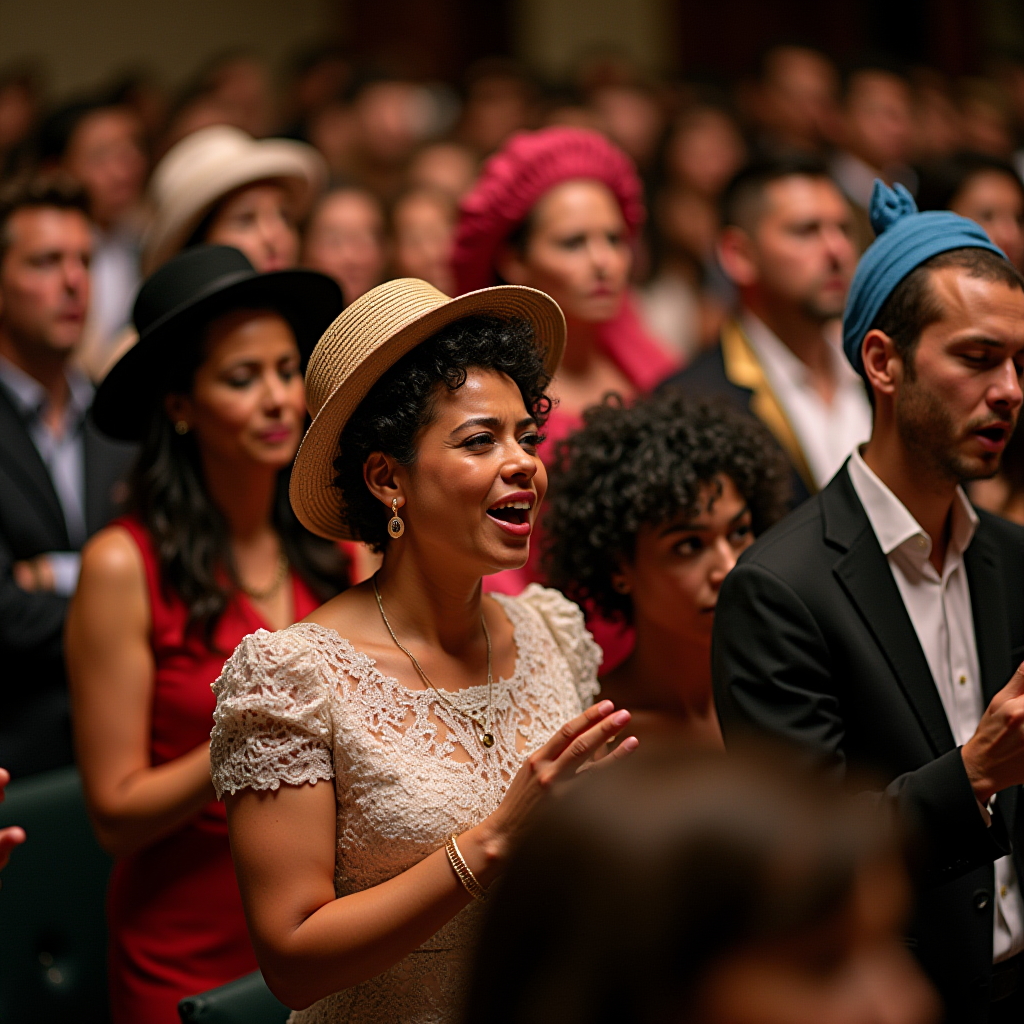
And so, here we are in the present day. What we wear to church reflects a mesh of history, culture, and personal conviction. For some women, the “Sunday Best” tradition is alive and well—polished dresses, heels, and perfectly coordinated blazers feel like the right way to honor God. For others, the focus is on comfort and approachability—clean jeans, a sweater, and ankle boots. The spectrum of what’s considered appropriate has widened, which I think speaks to the beauty of worship: it’s no longer bound by rigid traditions but remains deeply rooted in the heart.
You might not realize it, but every choice we make about how we dress for church is part of a greater historical and spiritual lineage. You’re choosing to be part of that story, whether you show up in a delicate lace dress like women wore centuries ago, or in a casual maxi skirt that reflects the relaxed spirit of today’s congregations. What remains most important, as it always has, is the spirit with which we dress. The heart still matters most.
As C.S. Lewis wrote in Mere Christianity, “Humility is not thinking less of yourself, but thinking of yourself less.” When we dress for church—historically, today, or in the future—it’s not about looking overly adorned or self-conscious. It’s about showing thoughtfulness and reverence for what church represents: a meeting place with God, a moment of alignment between the outward and inward self.
Read: How to Rizz Your Christian Man
Cultural and Denational Perspectives on Church Attire
What I find so fascinating about church attire is how it isn’t just an individual choice, but one shaped deeply by culture and denomination. The church is universal in its message, but the way that worshippers express respect, reverence, and devotion through their clothing can vary dramatically depending on regional, historical, and theological influences. I love exploring how unique traditions—both traditional and modern—across cultures and denominations infuse deeper meaning into what we wear to stand before God.
African American Church Traditions: Elegance as Resistance and Reverence
One of the most iconic and celebrated examples of church attire comes from the African American church, particularly in Baptist and Pentecostal traditions. Women’s outfits in these communities are far more than fashion—they carry cultural and spiritual significance. Sunday service in African American congregations has historically been a space for women to present themselves with pride, strength, and a sense of defiance against systemic oppression. Elegant dresses, tailored suits, extravagant hats, and bold accessories reflect a deep legacy of dignity and resilience in the face of discrimination.
Think about the powerful symbolism of the church hat, often lovingly referred to as a “crown.” In the African American community, the hat serves as a connection to Scripture, particularly 1 Corinthians 11:15: “But every woman that prays or prophesies with her head uncovered dishonors her head.” For centuries, women have stepped into church wearing wide-brimmed hats with feathers, rhinestones, or intricate embellishments, as though to say, I am fearfully and wonderfully made. I present myself as a child of God. These bold, creative choices honor both cultural tradition and biblical principles, reminding us how deeply personal and communal church fashion can be.
Even today, walking beside a stylishly dressed Christian man in an African American church feels like stepping into something holy and historic—a visually beautiful partnership filled with meaning. If he’s in a three-piece suit, maybe I’d choose something structured and bold, like a fitted peplum dress with striking jewelry. Together, our outfits could embody a unity that speaks to strength, celebration, and joy in faith.
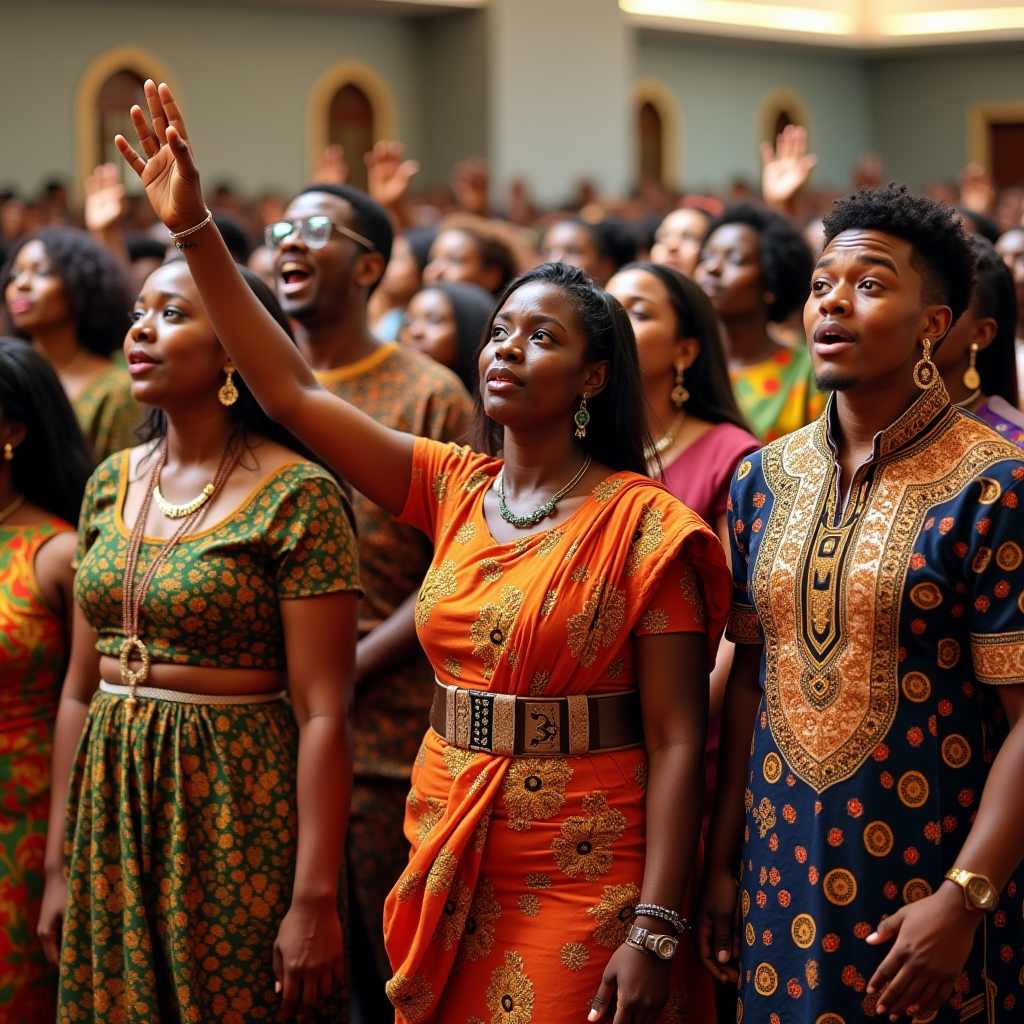
Evangelical and Contemporary Churches: Come as You Are
On the opposite side of the spectrum, many contemporary evangelical churches have embraced a “come as you are” ethos, encouraging members to prioritize authenticity and an approachable relationship with God over traditional outward appearances. It’s not uncommon for women in these settings to wear jeans, T-shirts, and sneakers—just as men might wear khakis, polos, or even shorts in warmer climates.
This shift to casual attire is rooted in the belief that God welcomes everyone, no matter what they’re wearing, as seen in Romans 10:12: “For there is no distinction between Jew and Greek; the same Lord is Lord of all, abounding in riches for all who call on Him.” In this setting, a woman’s church outfit is meant to reflect her individuality and authenticity. Dressing casually alongside her Christian partner might look like combining comfort with intentionality—perhaps pairing clean white sneakers with a flowy blouse and skinny jeans, while he opts for a plaid button-down and loafers.
Modesty still often plays a role in these spaces, but it’s a more flexible interpretation than, say, formal Protestant traditions. What I love about this “come as you are” mentality is how it emphasizes inward devotion over outward appearance, but as someone who enjoys dressing intentionally, I still like finding ways to make modesty feel meaningful. Even in casual outfits, it’s important to think about how clothing reflects respect for the sacred act of worship while mirroring how you and your partner show up in unity.
Catholic Traditions: Reverence and Ritual in Attire
For women attending Catholic Mass, cultural significance and tradition often lead to a more polished, reverent approach to clothing. In formal Catholic settings, dresses or skirts below the knee are preferred, and you may even find women wearing mantillas (lace veils) or other head coverings during Eucharistic celebrations. This practice often stems from 1 Corinthians 11:5-6 and serves as an outward expression of humility and reverence.
I’ve always admired how tradition and timelessness guide Catholic worship, though modern Catholics have become more relaxed about strict dress codes. Still, walking into Mass alongside a man in a suit and tie feels sacred and intentional—I’ll usually choose an outfit that mirrors that respect. A lace-overlay dress or a tailored midi skirt paired with a blouse works beautifully, paired with understated jewelry. When attending a service filled with ritual and majesty, the formality of dress feels appropriate—it’s a small way we can participate in the reverence of the liturgy.
Orthodox Christian Traditions: Humility and Simplicity
Orthodox Christian churches, whether Greek, Russian, or Eastern, often emphasize simplicity and modesty in women’s attire. Covering one’s head with a scarf is still widely practiced, and dresses or skirts are preferred over pants. These traditions reflect the Orthodox principle of humility before God—a desire to let go of worldly distractions and focus solely on worship.
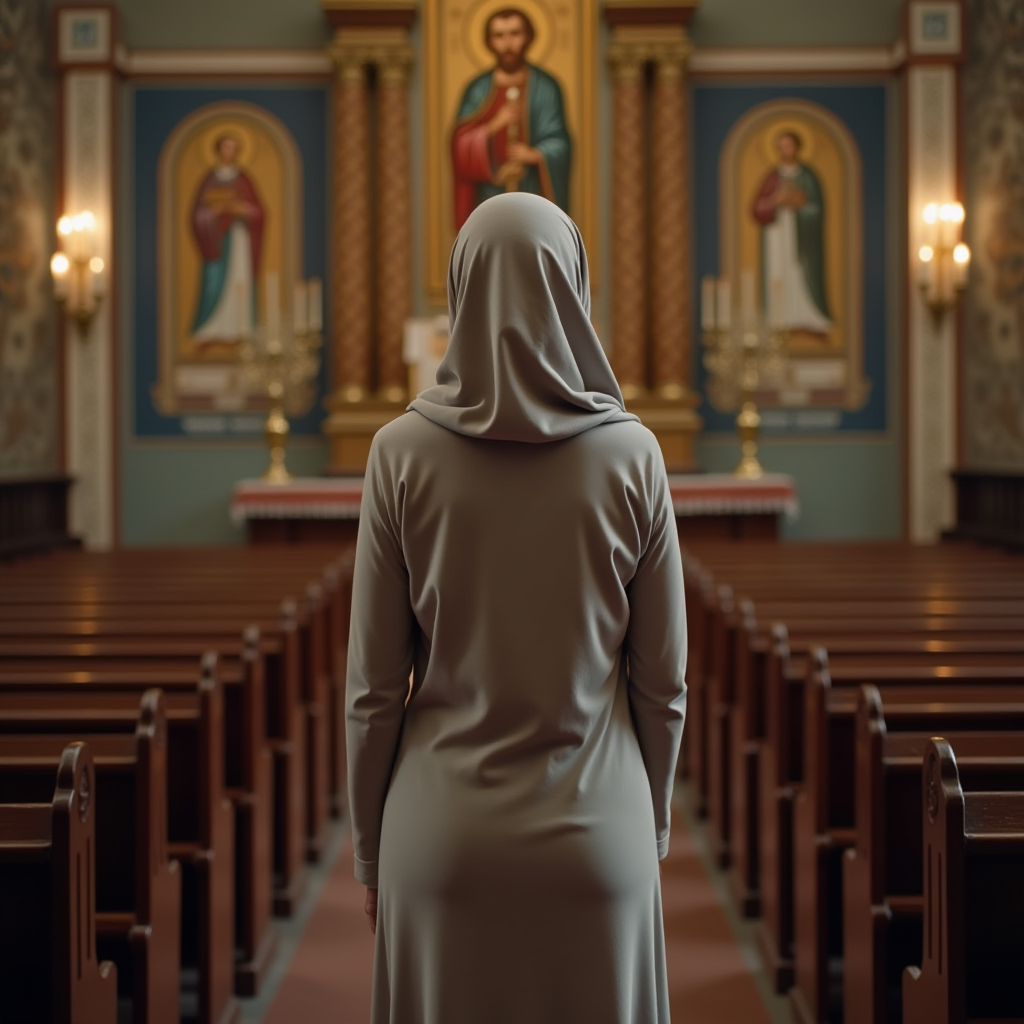
During my visits to an Orthodox service, I found a powerful sense of unity in the simplicity of the women’s attire. A long, solid-colored dress paired with a light scarf or shawl over the shoulders felt like an act of reverence, a reminder of how little we need to adorn ourselves before God. If my Christian partner wears dark, simple, and formal clothing, my goal in dressing is often to find harmony in muted tones and modest silhouettes that reflect this shared humility.
Charismatic and Pentecostal Traditions: Vibrancy in Worship and Wardrobe
Let’s not forget the vibrancy of charismatic and Pentecostal churches, where worship often includes music, movement, and joy-filled celebration. The women in these congregations often wear bright, bold dresses, extravagant hats, and accessories that honor the sacredness of the moment. Unlike some traditions that focus on simplicity, Pentecostal attire celebrates the exuberance of relationship with the Holy Spirit.
If I were walking into a Pentecostal service with my Christian man, I’d opt for something vibrant that reflects the energy of the congregation—a flowing dress in bold colors, or something that sparkles in the light. Coordinating with my partner might focus on matching tones–he might wear a shirt that complements the hues of my dress, making us look unified without needing exact matches. What I love about Pentecostal fashion is its unapologetic exuberance: worship is a celebration, and fashion gets to be part of that praise.
Bridging Cultures and Styles
Perhaps the most beautiful thing about church attire today is its diversity—how it reflects not only theological standpoints but also the cultures, identities, and personal relationships that make each congregation unique. Dressing alongside your Christian man can feel like an act of partnership across these traditions—from bold elegance to quiet simplicity, from formality to “come as you are.” Whether your shared style reflects centuries-old values or modern flexibility, the focus is always the same: stepping into church as a team, united in love and faith.
Read: How to Get a Boyfriend the Christian Way
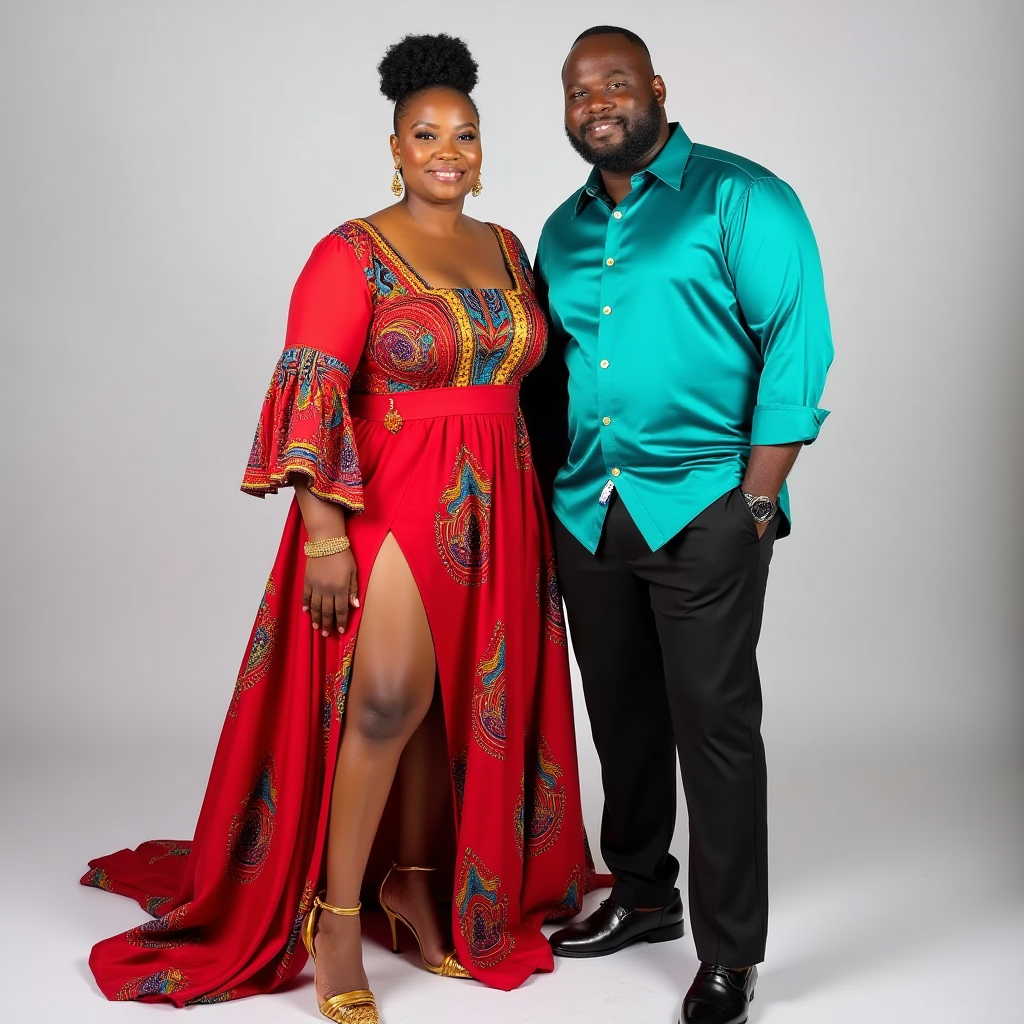
Modern Trends in Church Fashion and Staying True to Faith
Fashion, like everything else, evolves with time—but when it comes to church attire, the changes are often shaped by an interweaving of cultural shifts, generational preferences, and the desire to stay relevant without losing sight of spiritual values. Today, church fashion is more varied than ever, reflecting not only regional and community differences but also the increased emphasis on individuality. Yet, even with these changes, there’s always an underlying spiritual thread that helps guide how we present ourselves in the house of God.
The Rise of Casual Church Culture
One of the most noticeable trends of modern church fashion is the shift toward casual attire. In many evangelical, contemporary, and non-denominational church settings, the emphasis is on creating a welcoming and inclusive atmosphere—and a lot of that is reflected in how people dress. Gone are the days when suits and dresses were a universal standard for worship. Now, jeans, sneakers, T-shirts, and flowy casual dresses are some of the most common Sunday outfits.
This casual trend comes from the desire to break down barriers between people and the church. A lot of modern congregations have adopted slogans like “Come as You Are,” emphasizing that God cares about your heart, not whether you’re wearing pressed trousers or polished shoes. It’s a beautiful sentiment—and one backed by Scripture, particularly in 1 Samuel 16:7: “The Lord does not look at the things people look at. People look at the outward appearance, but the Lord looks at the heart.”
For women, casual church fashion often involves outfits that are simple but put-together: a knee-length floral dress, comfortable loafers or ballet flats paired with a linen blazer, or even dark-wash jeans with a modest blouse and boots. If your partner is dressing casually—say, wearing a polo shirt or clean denim—you can coordinate by keeping your look effortless but intentional. Add a delicate necklace or scarf to elevate the look slightly without making it feel overly formal.
Casual church dressing doesn’t mean sloppiness, though! There’s a difference between “comfortable” and “careless.” Modern Christians often approach this style with care, demonstrating that even the most laid-back outfits still reflect respect for the sacredness of worship.
Blending Tradition with Contemporary Style
Another exciting trend in church fashion is the blending of classic elements with modern style. Many women enjoy incorporating timeless pieces like a modest midi skirt or a button-down blouse but styling them in a fresh, updated way. For instance, pairing a pleated skirt with a cropped sweater or a turtleneck gives your outfit a contemporary twist while staying rooted in tradition.
Accessories play an important role here as well. A classic sheath dress might be paired with trendy block heels or a layered set of gold necklaces, offering subtle nods to current fashion trends without veering into anything too bold or attention-grabbing. In modern church settings, many women have embraced this balance: finding ways to honor traditional modesty while allowing personal taste to shine through.
For example, if your Christian man is wearing something classic—like a tailored suit—you might complement his look by wearing a dress in a neutral or jewel tone but mixing in modern details like asymmetrical hemlines or textured fabrics. This approach lets you maintain that visual harmony as a couple while also celebrating today’s fresh take on church fashion.
Sustainability and Ethical Fashion in Church Communities
One major movement in today’s fashion world—church and beyond—is the focus on sustainability, which has made its way into worship attire as well. Many Christians have begun to see ethical and eco-conscious fashion choices as an extension of their faith, rooted in stewardship of God’s creation. Shopping for vintage, secondhand, or sustainably made clothing not only helps the environment but also feels aligned with the biblical principle of caring for the earth.
As Christian couples, this value can even become part of your Sunday attire. You and your partner could seek to purchase timeless wardrobe staples that can be reworn across seasons—for instance, investing in a high-quality blazer he can pair with a variety of outfits or a classic A-line dress for you that can be styled different ways. Not only does this approach reflect practicality, but it also becomes a way to express thoughtfulness in how you honor the resources God has provided.
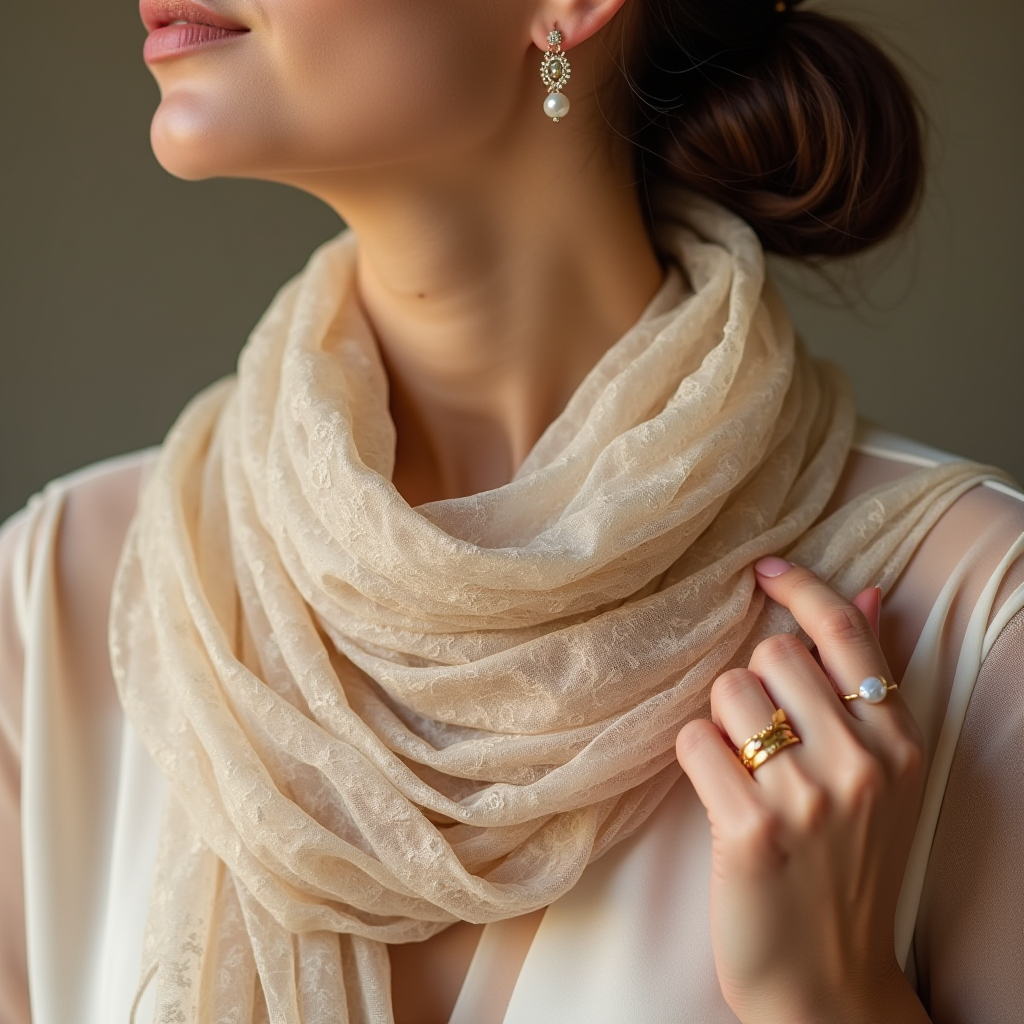
The Return of Formality in Special Services
While modern trends have leaned heavily toward casual or blended styles, there’s also a growing appreciation for formality in special services—such as Easter Sunday, Christmas Mass, baptisms, or even weddings. These occasions highlight the beauty of dressing intentionally and proudly presenting one’s best self at church.
Women today often reach for elegant staples like well-fitted dresses or two-piece outfits, pairing them with heels or modest pumps. Flowy fabrics like silk or chiffon work beautifully for these events, especially in soft, pastel colors for spring or deeper tones like emerald green and burgundy for winter.
For men, formal occasions often mean tailored suits or slacks with a freshly pressed dress shirt and tie. Coordinating as a couple can be fun and meaningful! For instance, you might choose an accessory—a scarf, jewelry, or clutch—that picks up on his tie or pocket square color. This subtle harmony in appearance always feels significant, as though you’re stepping into sacred spaces as one unit.
Diversity and Inclusivity in Church Dress
One of the most wonderful aspects of modern church fashion is how inclusive it has become, reflecting the diversity of the global church. From traditional African prints to modern indigenous designs, cultural expressions of faith through clothing have become more widely accepted, even celebrated, in many congregations.
For example, in multicultural churches, it’s not unusual to see women wearing bold kente patterns, saris, or embroidered tunics alongside women in Western-style dresses. In this way, clothing becomes a way to celebrate the diverse body of Christ, united under one spirit but enriched by varying cultural expressions. A Christian couple in this context can blend their cultural roots into their shared presentation, supporting one another’s heritage while dressing intentionally for the moment of worship.
How to Dress for Modern Worship
Ultimately, dressing for church in today’s world is about balance. We live in an era where individuality is celebrated more than ever, but the sacredness of worship still calls us to reflect reverence. For you and your Christian man, navigating this space together means striking a balance that works for both your personalities, your style preferences, and—in some cases—your church community’s expectations.
Ask yourselves questions as you get ready: Does what I am wearing reflect respect for God? Does it allow me to worship comfortably? Does it honor my values of modesty, authenticity, or even bold celebration? These guiding questions can help you make small yet meaningful decisions about your wardrobe.
At its core, modern church fashion is empowering because it lets each of us find a style that feels authentic yet sacred—whether you’re stepping into a cathedral in formal attire, leading worship in jeans and sneakers, or celebrating Easter Sunday in a colorful print. The “rules” may be more flexible, but the heart behind it—the desire to honor God and step into worship thoughtfully—remains timeless.
Read: A Busty Woman’s Tips to Make Big Breasts Look Smaller
Specific Style Suggestions for Church and Events: Inspiration for You and Your Christian Man
When it comes to styling your outfits for worship or special church occasions, there’s beauty in embracing intention—not just as individuals but as a couple. Whether for a casual Sunday service, formal events like Easter or Christmas, or even a wedding at church, you can reflect unity as a team while honoring the sacredness of the moment. Below, I’ll offer specific outfit ideas for different settings to inspire both of you to feel confident, respectful, and connected.
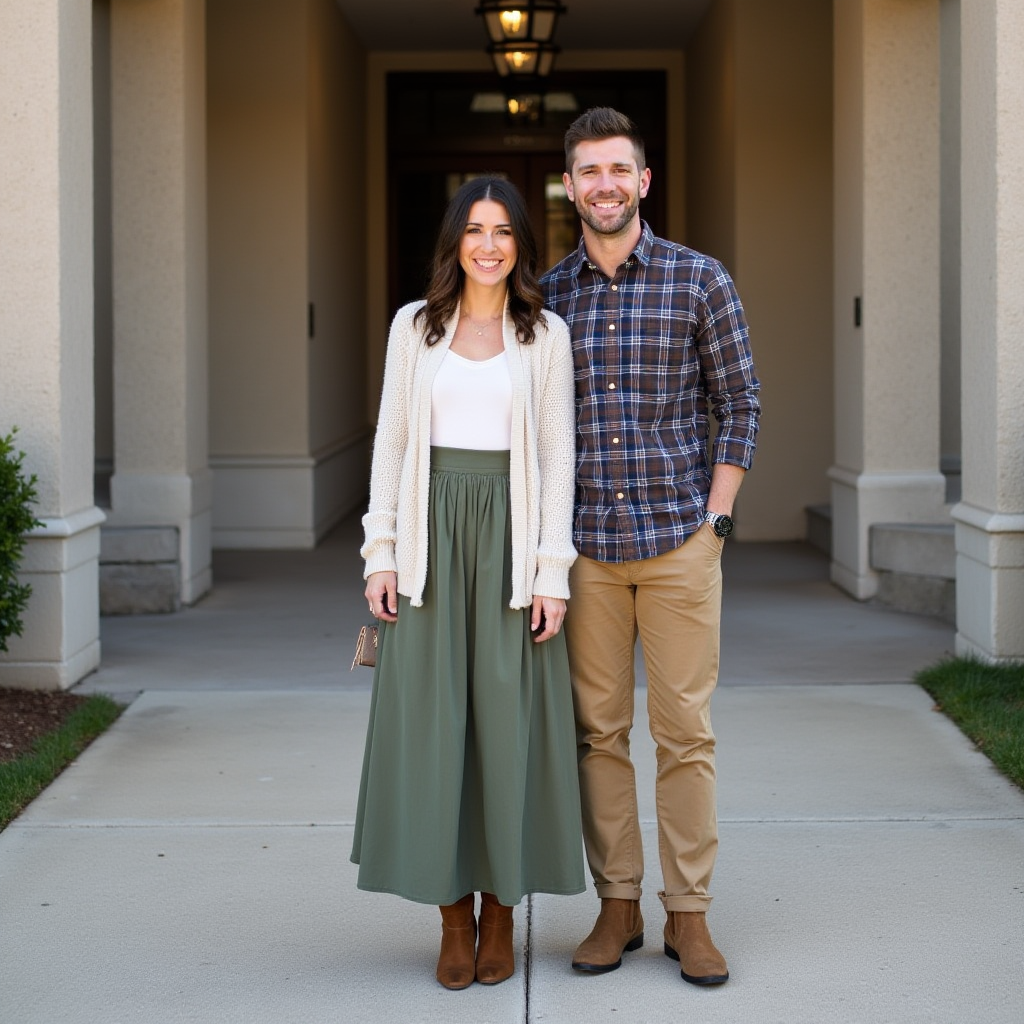
1. Casual Sunday Service
Today, many church communities emphasize a relaxed, “come-as-you-are” approach, meaning you and your Christian partner can opt for modest, comfortable clothing while still looking polished.
- For You:
A knee-length wrap dress in soft, breathable fabrics like cotton or jersey works beautifully. Choose neutral tones (earthy greens, light blues, or beige) or subtle prints, and pair it with ballet flats or ankle boots. Add understated accessories, like stud earrings or a delicate cross necklace, to keep the look simple but intentional. - For Him:
A casual button-up shirt in check or chambray paired with dark jeans or chinos strikes a great balance between relaxed and put-together. Polished sneakers or loafers ensure the look is clean without being overly formal. - As a Couple:
Coordinate color tones for a cohesive yet subtle look. For instance, if his shirt is a shade of blue, you could wear a printed floral dress that incorporates a similar color. This harmony feels effortless while reinforcing unity.2. Business Casual: A Slightly Formal Service or Events Like Baptisms
Some churches maintain a more polished “business casual” dress code for services or events such as baptisms or confirmation ceremonies. This is a great middle ground—elevated yet still approachable.
- For You:
A tailored midi dress—think structured fabrics like crepe or satin—pairs beautifully with low block heels or classic pointed-toe flats. Opt for solid colors such as navy, blush, or mustard, or choose subdued patterns, like polka dots or stripes. Add a simple cardigan or blazer if needed for cooler weather or modesty. - For Him:
A collared shirt with a blazer or sports coat, paired with khakis or dress slacks, is perfect. Add leather loafers or oxfords to formalize the look slightly. - As a Couple:
Coordinate the theme by blending formal accessories. For example, if you’re wearing pearl jewelry, he might opt for cufflinks to match. Or, pick one shared color palette, like navy and cream, to create subtle cohesion.

3. Formal Services: Easter, Christmas, Weddings, or Special Occasions
For high-profile or formal occasions at church, there’s a wonderful opportunity to celebrate the sacredness of the moment with elevated attire. This is the time for refined, classic looks that stand out in their simplicity and elegance.
- For You:
A tea-length or A-line dress in elegant fabrics (lace, chiffon, or silk) works wonderfully for formal settings. Consider soft pastels like lavender and sage for spring events (e.g., Easter mass) or rich tones like burgundy, emerald, or navy for winter celebrations. Pair with simple pumps, pearls, or a pendant necklace. If you’re part of a wedding, lean into lighter neutrals or the color palette chosen for the event. - For Him:
A tailored suit in a traditional color (gray, black, or navy) with a button-down dress shirt and tie works perfectly for these occasions. A pocket square can add flair, especially if it coordinates with your outfit (e.g., his pocket square matches the color of your dress). For weddings or special services like Christmas mass, polished black or brown dress shoes complete the look. - As a Couple:
Matching accessories is always a sweet and understated nod to unity in formal settings. For instance, his tie or shirt could pick up on the color of your dress, or you could both embrace a coordinated pattern—floral for her, and a similarly toned solid for him.
4. Charismatic or Vibrant Worship Services
Pentecostal and multicultural worship services often encourage bold, joyful self-expression in attire. Attending a service like this gives you the chance to celebrate unity while dressing in brighter, bolder pieces.
- For You:
A bright, flowing maxi dress or a fitted but modest peplum dress in bold colors (red, teal, purple, or yellow) nods to the celebratory nature of charismatic worship spaces. Pair with statement earrings or a wide-brimmed hat for added flair. Comfortable yet stylish block heels or sandals work perfectly for comfort during longer services. - For Him:
A bold tailored shirt (vibrant patterns or warm jewel tones) paired with slacks or even a contrasting blazer emphasizes energy while remaining respectful. Leather shoes with subtle detailing add polish to the look. - As a Couple:
This is the perfect space to lean into creativity as a team! You could both choose geometric or floral accents that align, or complement each other with contrasting yet harmonious palettes (e.g., your vibrant red dress paired with his navy and red shirt).
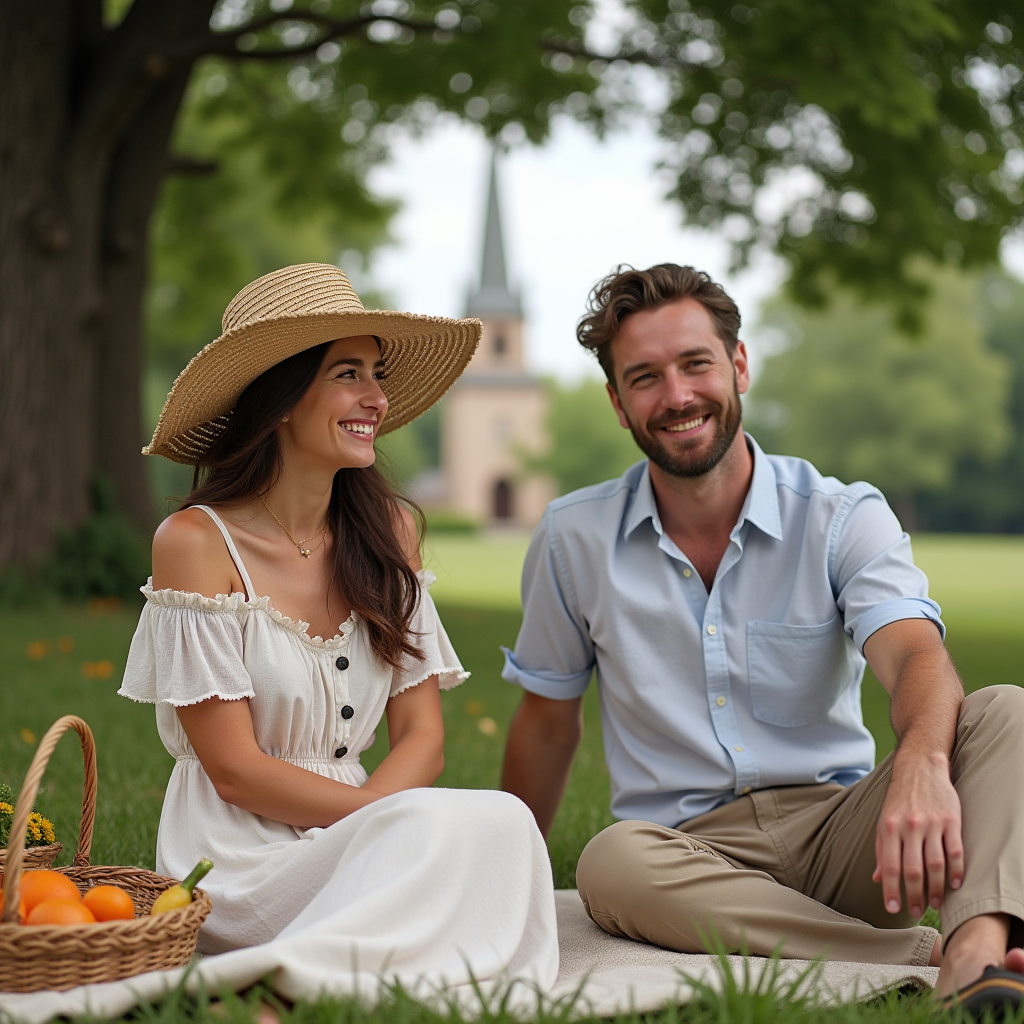
5. Outdoor or Seasonal Services
Many churches hold occasional outdoor services during the summer or special events during seasonal changes like Easter sunrise service or fall harvest gatherings. Outdoor settings encourage a mix of practicality and style.
- For You:
A lightweight midi dress—such as linen or cotton—is ideal for outdoor services. Pair with wedges, flats, or leather sandals (skip stilettos on grass!). Bring a light shawl for chillier mornings or evenings, and consider a wide-brimmed hat for sun protection. Maxi skirts paired with a modest tee or blouse work beautifully when a dress feels too formal. - For Him:
Opt for a relaxed but polished look: a collared short-sleeve shirt or a lightweight sweater works well with chinos or dark jeans. Casual loafers or slip-on dress shoes complete the outfit. - As a Couple:
Coordinate with the season by mirroring your choices in light, breezy colors for spring/summer or earth tones for fall. For example, if he’s wearing a light beige sweater, you could wear a pale green dress to match seasonal tones of renewal and growth.
Read: Do Looks Matter in a Christian Relationship?
Accessories and Coordination Tips for Couples
Regardless of formality, start thinking of accessories and details that connect your outfits:
- Color Coordination: Start with a base color. If his tie or shirt is burgundy, you can choose a dress with burgundy accents, or even just a scarf or clutch in that hue.
- Textures and Patterns: If his suit has a subtle pinstripe, you could pick a dress with a similar linear texture or tone to tie the outfits together subtly.
- Accessories: Share the same jewelry tones! If he’s wearing a gold watch, you might select gold earrings or bracelets to complement.
- Footwear Synergy: You don’t have to match shoes—but staying consistent in terms of overall style (e.g., he’s in oxfords, and you’re in classic pumps) helps maintain a cohesive, polished vibe.
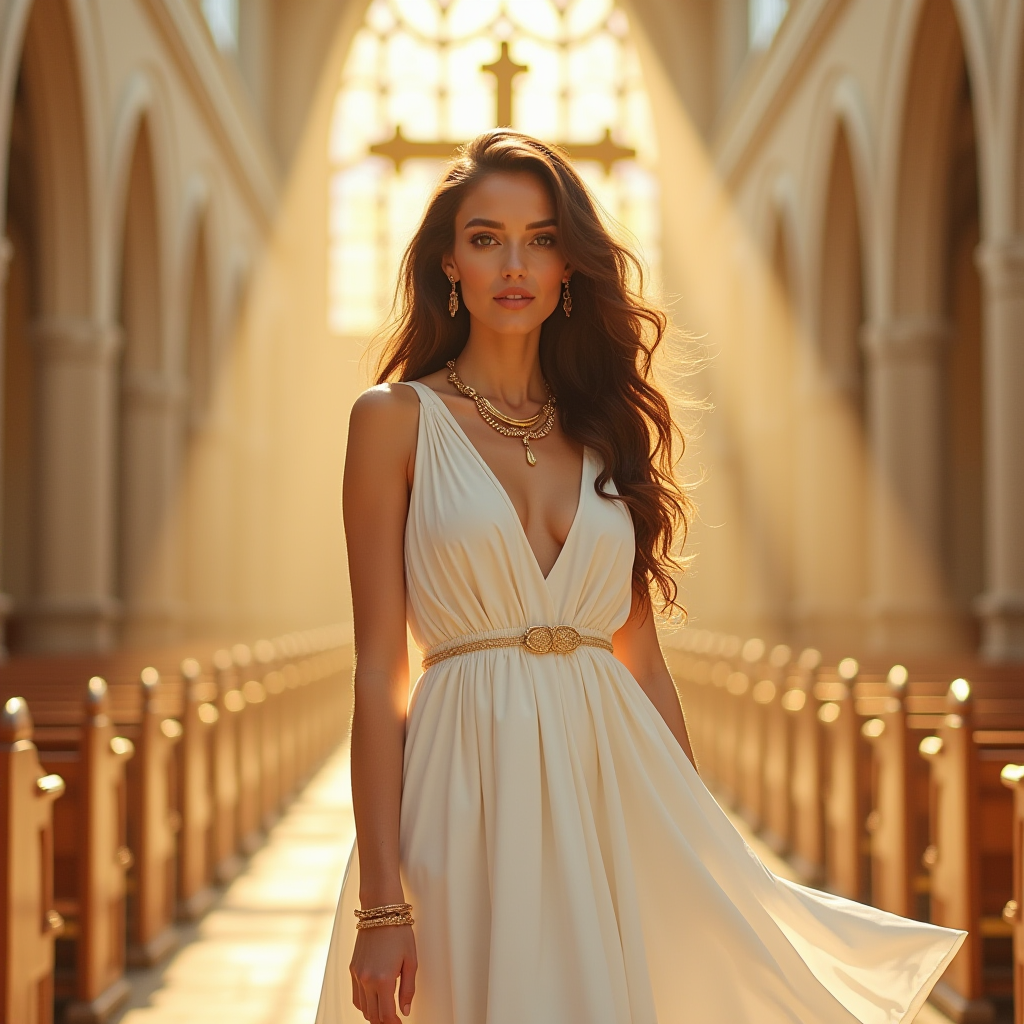
Whatever the occasion, dressing for worship together is a way to celebrate not only your individuality but also your shared journey as a couple walking in faith.
Whether the setting calls for casual or formal attire, remember that the intention behind your choices is what matters most. By reflecting respect for the sacred space and the relationship, both your outfit choices and your partnership become a testimony of worship, unity, and love.